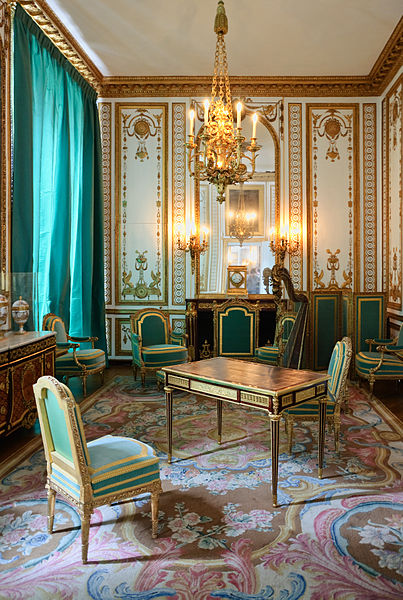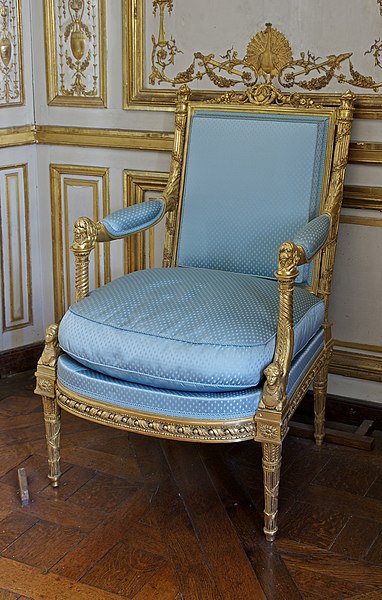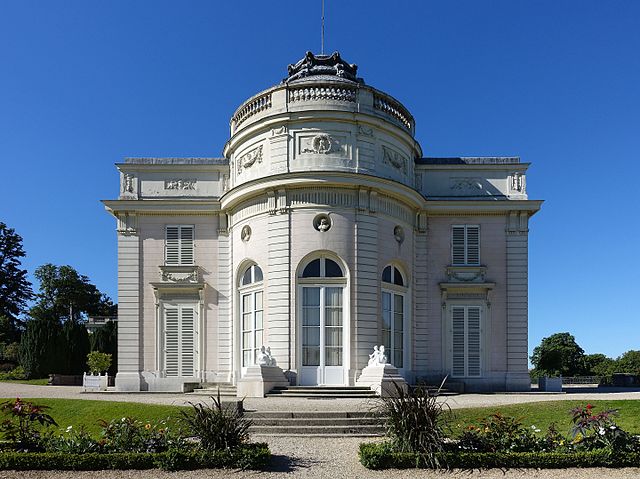Jean-Henri Riesener was a famous German ébéniste (cabinetmaker), working in Paris, whose work exemplified the early neoclassical "Louis XVI style".
Portrait of Jean-Henri Riesener, seated at one of his writing tables, by Antoine Vestier, 1786 (Musée de Versailles).
Writing table made for Marie Antoinette, 1780–85 at Waddesdon Manor.
Bureau du Roi, delivered to Louis XV.
Portrait of Jean-Henri Riesener by his son, Henri-François Riesener, 1800 (Waddesdon Mano)). In this later portrait, Riesener is depicted with a degree of intimacy and informality, in contrast to his portrait by Vestier, which shows him as a man of court, dressed in elaborate clothes and seated at a table.
Louis XVI style, also called Louis Seize, is a style of architecture, furniture, decoration and art which developed in France during the 19-year reign of Louis XVI (1774–1792), just before the French Revolution. It saw the final phase of the Baroque style as well as the birth of French Neoclassicism. The style was a reaction against the elaborate ornament of the preceding Baroque period. It was inspired in part by the discoveries of Ancient Roman paintings, sculpture and architecture in Herculaneum and Pompeii. Its features included the straight column, the simplicity of the post-and-lintel, the architrave of the Greek temple. It also expressed the Rousseau-inspired values of returning to nature and the view of nature as an idealized and wild but still orderly and inherently worthy model for the arts to follow.
Image: Cabinet dore Marie Antoinette Versailles
Image: Fauteuil Jacob cabinet méridienne Versailles
Image: Château de Bagatelle, Paris 17 July 2016 004
Image: Jean henri riesener, angoliera, 1785 ca








